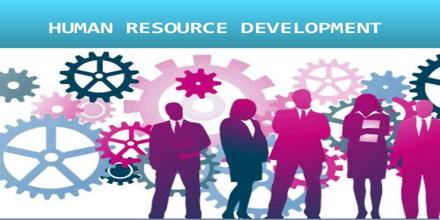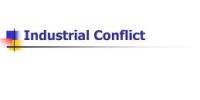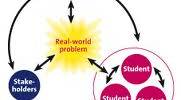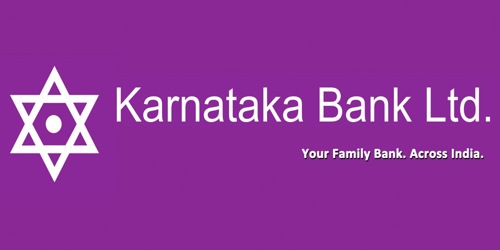Effectiveness of Human Resource Management in Improving Performance
What value does the human resource (HR) function contribute to the bottom line of the organization? Over the years, there has been tremendous emphasis placed on HR practitioners becoming strategic business partners and being a value-added source within organizations. Traditionally, HR professionals could talk generally and conceptually about employee morale, turnover, and employee commitment being outcomes of HR efforts. Furthermore, the HR function is often viewed as an expense-generator and an administrative function and not as a value-added partner. Ulrich (1997b) reiterated that to fulfill the business partner role of HR, concepts need to be replaced with evidence, ideas with results, and perceptions with assessments.
This article examines the strategic role of HR and its main practices, describes the outcomes of the respective category of HR practices, explains the critical reasons for measuring HR’s efforts, and proposes a framework for assessing HR. Ultimately, organizations would be able to utilize the information to determine how particular HR practices correlate with better business results; determine potential areas for investments, expansions, and reductions; justify budget allocations; and be more accountable for each dollar spent within the organization. The framework proposed does not merely explain the cost for each of the major HR activity, but demonstrates the value of the activity and hence, the opportunity to determine if it is a worthwhile investment and strategy for creating a competitive advantage.
Understanding the Strategic Role of Human Resource
In today’s business environment, organizations need to be constantly evaluating their internal and external environment for challenges and opportunities to remain competitive and to sustain growth. Political, economic, social, and even psychological changes within our societies create significant impact on organizations. Given any significant change or event, how ready are we as an organization to react in order to remain competitive?
Many factors are driving changes in organizations today including the use of technology, globalization, changes in workforce demographics, eliminating the bureaucracies in organizational structures, and balancing work-family issues. Understanding the potential of an organization’s resources and optimizing the output of such resources given the changes, provides the impetus for HR being the key source of creating the competitive advantage for the organization.
To create value and deliver results, HR professionals must begin not by focusing on the work activities or work of HR but by defining the deliverables of that work. HR’s roles in building a competitive organization include management of strategic human resources, management of transformation and change, management of firm infrastructure and management of employee contribution (Ulrich, 1997a). Although these roles are valid and have proven to be value-added in recent years, there is now the critical need to move beyond the strategic business partner role to players in the business (Ulrich & Beatty, 2001). Players, according to Ulrich & Beatty, contribute to the profitability of the organization, they deliver results and they do things to make a difference. The roles of players are to a) coach b) design, c) construct, d) change the organization, e) creating followers, and f) playing by the rules. Another perspective on the role of HRM suggests that in leading-edge companies, HR professionals play four key roles: a) strategic business partners, b) innovators, c) collaborators, and d) facilitators (Schueler & Jackson, 2000). As a strategic business partner, HR professionals should understand the nature of the business from strategic, operational, financial, and other aspects necessary to be part of an effective team managing an organization. Functioning as an innovator, HR professionals are challenged to continuously search for strategies that will create value for the organization and not merely function in a reactionary mode. Furthermore, HR professionals will also serve as collaborators with senior leaders and all employees to implement business strategies forming the strategic link throughout the organization. As facilitators, HR professionals function as the change agent providing rationale, support, and readiness for planned changes designed to support the business strategies.
The fundamental role of HRM is essentially to maximize profitability, quality of work life and profits through effective management of people (Casio, 2003). Given this premise, it can be easily inferred that HR’s role is to help create value to the organization. Figure 1 illustrates some of the external challenges and changes facing organizations, their impact on the organization, and how HR is impacted.
The Importance of Measuring Human Resource’s Activities
Even though HR professionals are convinced that their efforts add value to the organization’s bottom-line, there is frequently little evidence to demonstrate such belief. A recent survey of 54 companies in the Midwest, USA conducted by the author revealed that 51 of the 54 companies conducted little or no assessment of their HR department’s efforts and therefore could not have provided any quantitative measures of HR’s value to the organization. In addition, a study conducted by Becker, Huselid, and Ulrich (2001) indicated that less than 10% of the 968 firms that participated in their study had a formal estimation procedure to measure HRM.
Measurement in most HR departments is usually restricted to processes measuring costs and not showing value added (HRPS, 1993). There is now the imperative need to justify each dollar invested, compare strategies to determine maximum worth, and to decide on where to invest especially as companies scramble to survive after the September 11 tragedy. Pepitone (1997) reiterated that HR leaders should know how to prove the value-added of their services because management is increasingly requiring departments to give evidence of their worth. In addition, Sorensen (1995) stated that the best way for Human Resource to gain credibility so that it can make meaningful changes is for practitioners to measure the cost and effectiveness of what they do. And they must put that into language that senior executives understand: financial results. HR managers need to measure the cost and effectiveness of their activities far more closely than they have in the past. Many organizations have been forced and are continuing to determine ways of being more cost-effective. Many of the other functions including finance, accounting, and marketing are able to show a return on investment for their respective efforts, so given the increased emphasis on HR practices, it is imperative for Human Resource to be able to show its effectiveness in creating value for the organization. The new HR is a transformed role comparing itself to any other function, not only through espoused value creation strategies, but through outcomes, qualitative and quantitative measurements, and direct relationships to profitability.
Human Resource’s Activities & Outcomes
Even though there are several classifications or groupings of HR activities, the author uses seven groups of activities seen as being most strategic and influential in realizing the strategic business objectives of the organization. Today’s economy dictates that organizations continually assess the external and internal environment and make relevant changes in order to remain competitive. The author examines each of the clusters and provides a description of each, its importance in achieving the business strategy, and how it can be measured to determine its effectiveness.
Strategic Planning
The role of the HR function has changed tremendously over the past 10 years where HR functions have previously been viewed as not being an integral core of the business and merely viewed as an administrative function to today’s economy where HR practitioners are more frequently considered business partners. Being a business partner, the ideal situation would be the inclusion of the HR leader in the strategic business planning (SBP). “In the most fundamental sense, SBP involves choosing how an organization will compete” (Rothwell, 1994).The questions of what product to produce, where should the product be sold, how many to make available, how the products and services differ from the competition are included as part of the business planning process. Business strategy can also be defined as the “process by which the basic mission and objectives of the organization are set and the process by which the organization uses its resources to achieve the objectives”(Tichy, Fombrum, & Devanna, 1982).
Acquisition of Employees
In the era of increasing globalization and the struggle to create sustainable competitive advantages, organizations are continuously evaluating their strategies to ensure that they have the expertise needed to help achieve the mission of the organization. The economic challenges due to the consequences of the 9/11 terrorists attacks on the United States also continue to affect organizations’ financial position and subsequently on recruitment and selection strategies. Gatewood & Feild (2001) define selection as a “process of collecting and evaluating information about an individual in order to extend an offer of employment.”
.
Training and Development
The American Society for Training & Development estimates that US organizations are spending more than $60 billion annually on employee training and development. Given this significant investment, it is reasonable for one to ask about the benefits of such investments, especially since more companies are seeing a need for lifelong learning and are integrating technology in their strategies. Swanson (1995) defined employee training and development as the process of systematically developing expertise in individuals for the purpose of improving performance. The argument as to whether T & D helps to create a competitive advantage has shown that conceptually, it can be a source of competitive advantage. Nevertheless, there still is a critical need to develop frameworks and strengthen the argument for being aware of the actual benefits provided by this intervention. Developing a framework for assessing the financial benefits of T &D,
Fitz-enz (2002) suggested that in addressing the results of the training process, the following questions be answered:
- How well did the employee learn?
- How effectively did the employee apply the learning from a business standpoint?
- What difference did it make to the business perspectives?
In sum, measuring the impact of a training initiative regardless of the scope, size of investment, and number of employees involved, there is the imperative need to determine the purpose of doing the training and if the goals have been met at various intervals after the intervention had been completed.
Organization Change and Development
Given the continuing changes in the global economy, demands of customers, preferences and values of employees, it is a necessary component of the HR strategy to ensure that the organization is adapting to the external and internal variables it current faces and would likely face in the future in order to meet its stakeholders’ expectations. The pace of global, economic, and technological development makes change an inevitable feature of organizational life (Cummings & Worley, 2002). A growing importance and competency expected from the HR professional, therefore, is his or her ability to plan and implement the necessary changes for the purpose of improving performance. Swanson (1995) defined organization development (OD) as the process of developing and implementing planned changes in organizations for the purpose of improving performance. The opportunity for HR through its organization development interventions is to create organizational effectiveness at the individual, department, function, process, and organizational levels.
Performance Management
“Performance management systems make clear to employees what is expected of them and assure line managers and strategic planners that employee behaviors will be in line with the company’s goals” (Noe, Hollenbeck, Gerhart, & Wright, 2003). Many organizations still rely on the performance appraisal viewed as an annual ritual and primarily the responsibility of the HR function. In today’s economy and the utmost of managing performance to create a competitive advantage Noe, et al (2003) grouped performance management into three categories of defining performance, measuring performance, and the feedback aspect of performance.
Rewards System
The starting point for any reward system design process needs to be the strategic agenda of the organization (Lawler, 1990). By understanding where the organization is positioning itself for various intervals in the future, an organization could design the reward system to provide incentives specifically designed to foster behaviors, attitudes, and outcomes among the workforce that directly correlate with the strategic agenda of the organization. As indicated by Lawler (1990), numerous studies including (Vroom, 1964, Lawler, 1971, and Kerr, 1975) have shown that effective rewards systems can significantly increase the motivation of individuals to increase their performance. As inferred from these studies, the fundamental intent of rewards in organizations is to provide incentives to achieve individual and organizational behaviors that would enable the organization to create competitive advantages and maximize the value of the shareholder’s investment.
Organizational Behavior & Theory
Key aspect of successful leadership is the ability to understand one’s workforce, be able to influence their behaviors, and predict their behaviors given any specific conditions. Today, the HR function may not view this as part of their core responsibility, but in reality if is definitely their responsibility to understand the needs of their workforce and how any given policy or practice may affect the behaviors of the employees. McShane & Von Glinow (2002) defined organizational behavior as the study of what people think, feel, and do in and around organizations. The importance of focusing on organizational behavior is to assess if the way people are thinking, feeling, and behaving correspond to the strategic intent of the organization and produce the outcomes necessary for the attainment of the organization’s business goals.
Conclusion
Does Human Resource contribute to the bottom-lime of an organization? Given that several large-scale studies have proven that HRM is a critical driver in an organization’s financial performance, it is imperative for HR and other leaders to understand the critical nature and utmost importance of understanding the effectiveness of all HR activities in creating value for the organization. It is only through measuring of HRM that one can really articulate the benefits of HR strategies in achieving the organization’s business strategy and in the process enhance the credibility of the HR profession.
The HR profession is at a juncture where measuring HR’s efforts is not just a nice thing to do, but should be an integral part of an Human Resource department’s efforts.
















